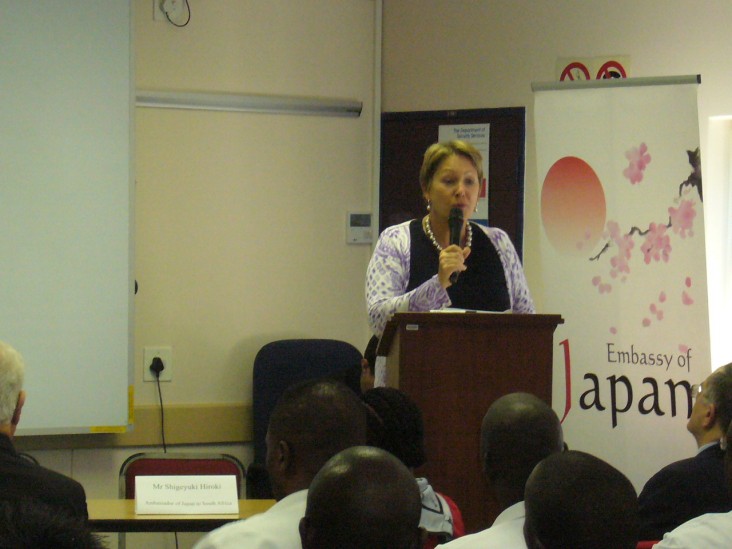Home » News & Information » Speeches » USAID Southern Africa, Mission Director Cheryl L. Anderson addresses the 4th Great East Japan Earthquake and Tsunami Memorial
Wednesday, March 11, 2015
Subject
4th Great East Japan Earthquake and Tsunami Memorial at the University of Pretoria

Your Excellency, Ambassador Hiroki
Minister Gordhan
JICA Chief Representative, Mr. Kinomoto
Distinguished guests
I am honored and humbled, to be here with you on the anniversary of such a catastrophic event. Thank you for allowing me to pay my respects and solemnly represent the people of the United States.
The events of four years ago show how important first responder organizations are, and highlight the need for the international community to work together to ensure that we are ready to respond to the next emergency, wherever it may be.
The Japanese Foreign Ministry was quick to respond in 2005 when Hurricane Katrina became one of the deadliest natural disasters to strike the United States.
The Japanese government supported the Red Cross and provided emergency supplies identified by the U.S. Government, and many private and corporate donations were made to Katrina relief efforts.
We once again thank the people of Japan for their assistance at that time.
We heard earlier about Japan’s program of Disaster Risk Resilience in Africa.
Similarly, the United States Government’s commitment to disaster risk reduction includes an extensive focus on building first responder capacity around the globe.
USAID’s Office of Foreign Disaster Assistance is proud to be a supporter and champion for Rescue South Africa, on behalf of the United States Government and the American people.
By supporting this dedicated group of individuals, we have bolstered the quality and quantity of trained urban search and rescue technicians in Africa, and this will have lasting and life-saving impact.
Fifteen years ago, USAID began working with Rescue South Africa, conducting an initial train-the-trainer course in South Africa in May 2000.
Rescue South Africa is now an internationally recognized rescue team, made up of volunteer emergency response specialists from the South African public and private sector emergency and ancillary services.
The group has integrated itself into the South African disaster management landscape, supporting local emergency response departments, including through training new urban search and rescue specialists.
Most recently, USAID is supporting Rescue South Africa’s mission to build the emergency response capacity of first responders in Botswana, Lesotho, Malawi, Namibia and Zambia; creating certified teams able to handle sudden-onset disasters both locally and across the region.
Moreover, in November 2013, Rescue South Africa medical teams provided health, safety and engineering services in the Philippines in the wake of Typhoon Yolanda.
Rescue South Africa also contributed to the earthquake response in Haiti in 2010 and the tsunami response in Japan in 2011.
As you have heard, we coordinate closely with our friends at the Embassy of Japan to ensure that USAID complements their ongoing work with Rescue South Africa through UNOCHA.
The combined impact of our projects has led to a cadre of search and rescue professionals that will be maintained on an African Union database, and used to efficiently assemble response teams to deal with emergency events in the region.
This emergency response database was developed thanks to the efforts of today’s hosts, the Government of Japan.
Once again, allow me to humbly pay our respects to the people of Japan. Our thoughts are with you today, as they were four years ago.
Thank you.
Pretoria, South Africa
Issuing Country







Comment
Make a general inquiry or suggest an improvement.